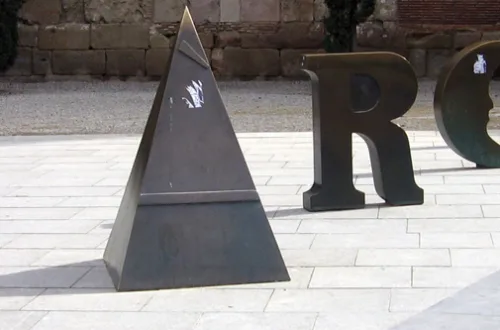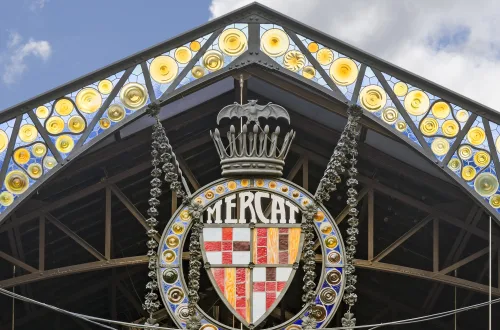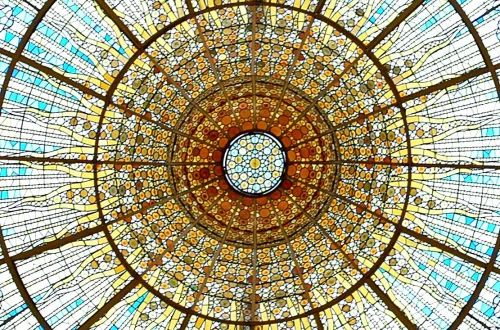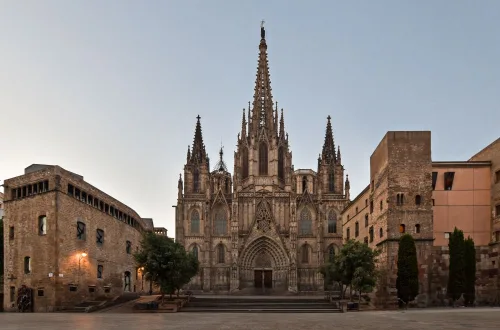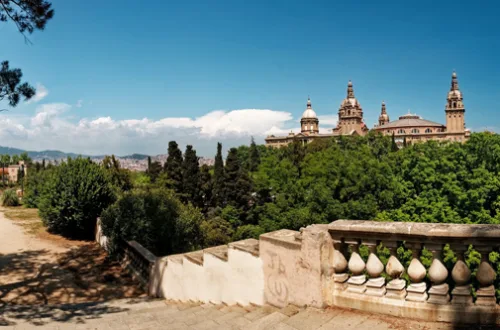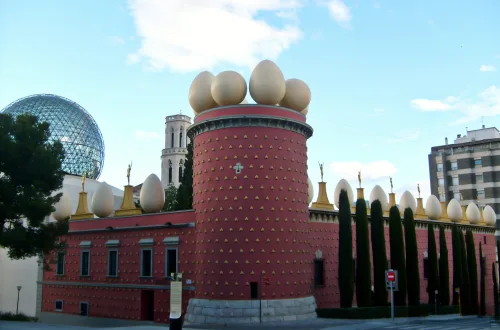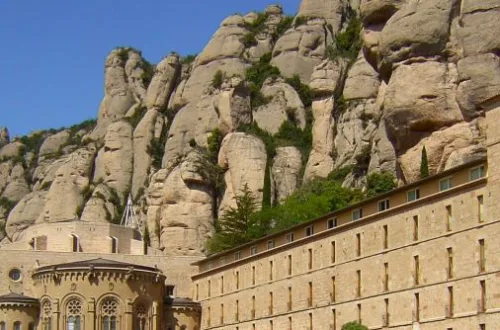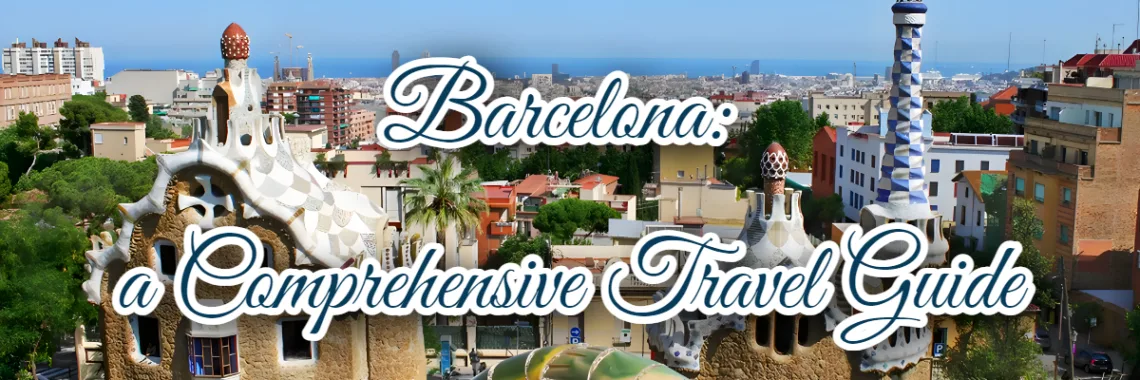
Visit Barcelona (Spain)
Barcelona, the beautiful capital of Catalonia, is a vibrant and culturally rich city that never fails to impress. From its stunning architecture to its lively streets, this dynamic destination always has something new to discover.
- What I love most about Barcelona
- A brief history of Barcelona
- The best 20 Things to see and do in Barcelona
- 1. La Sagrada Família
- 2. Park Güell
- 3. La Rambla de Barcelona
- 4. Gothic Quarter
- 5. Casa Batlló
- 6. Montserrat
- 7. The Picasso Museum in Barcelona
- 8. La Boqueria
- 9. La Barceloneta Beach
- 10. Casa Milà (La Pedrera)
- 11. Passeig de Gracia
- 12. Palau de la Música Catalana
- 13. Magic Fountain of Montjuïc
- 14. El Born Cultural Center
- 15. The Barcelona Cathedral
- 16. Museu Nacional d'Art de Catalunya
- 17. Gracia Neighborhood
- 18. Parc de la Ciutadella
- 19. Hospital de Sant Pau
- 20. The Gaudí Crypt
- Plan your visit to Barcelona
- Ten Travel tips for an enjoyable journey to Barcelona
- Discover Enchanting Destinations: Top Places to Visit Near Barcelona
“Barcelona’s appearance was surprising and irresistible. For the first time in my life, I was in a city where the working class had the upper hand.”
George Orwell
What I love most about Barcelona
Having lived here for some years, I’ve enjoyed exploring Barcelona and getting to know its many wonders. Here are just some of the things I love most about this incredible city:
Gaudi’s architecture
Barcelona is home to many architectural marvels, but none are as iconic as the works of Antoni Gaudí. From the towering spires of La Sagrada Família to the colorful mosaics of Park Güell, Gaudí’s whimsical and imaginative designs are a feast for the eyes.
The beach
While Barcelona is known for its urban charms, it’s also blessed with a beautiful stretch of coastline. The city’s beaches are perfect for relaxing, soaking up the sun, or taking a refreshing dip in the Mediterranean Sea.
The food
Catalan cuisine is a delicious mix of Mediterranean flavors and local traditions. From fresh seafood to hearty stews, there’s no shortage of mouth-watering dishes to try in Barcelona. And, of course, no trip to the city is complete without sampling some of its famous tapas.
The people of Barcelona
Last but not least, Barcelona’s people truly make this city special. Whether you’re chatting with locals in a café or striking up a conversation with a fellow traveler, you’re sure to be met with warmth and hospitality in this welcoming city.
Barcelona’s Roman Ruins: A Comprehensive Guide for History Enthusiasts
Exploring La Rambla: A Visitor’s Guide for Walking the Most Famous Street in Barcelona
From Cobblestones to Cathedrals: Top 10 things to do in the Gothic Quarter of Barcelona
The Marvels of Modernism: Tracing Art Nouveau Treasures in Barcelona’s Urban Canvas
A brief history of Barcelona
Barcelona is a city with a rich and complex history that spans thousands of years. From its ancient Roman roots to its vibrant modern culture, the Catalan capital is a fascinating place to explore.
The early history of Barcelona can be traced back to the 3rd century BC, when it was a small Iberian settlement known as Barcino. In the 1st century BC, the Rome conquered the area and transformed it into a thriving city with an impressive aqueduct, a forum, and numerous temples.
After the fall of the Roman Empire, Barcelona fell under the rule of various Germanic people before being conquered by the Moors in the 8th century. The Frankish king Louis the Pious later seized the city and incorporated it into the “Hispanic March” (Marca Hispánica), a buffer zone of the Carolingian Empire.
In the Middle Ages, Barcelona became a major center of trade and commerce, thanks in part to its strategic location on the Mediterranean coast. It also developed a unique culture and language that differentiated from the rest of Spain.

Barcelona: Becoming a modern (and Modernist) city
During the 19th and early 20th centuries, Barcelona underwent a period of rapid industrialization and modernization. The city became a textile industry hub and saw the construction of many landmark buildings, including the iconic Sagrada Família cathedral.
In the 20th century, Barcelona faced many challenges, including the Spanish Civil War and the rule of Francisco Franco. Despite these difficult times, the city remained a center of resistance and cultural expression.
In the decades following Franco’s death in 1975, Barcelona experienced a cultural and economic renaissance. The city hosted the 1992 Summer Olympics, which helped boost its profile and attract millions of visitors worldwide.
Today, Barcelona is a vibrant and cosmopolitan city that continues to evolve and innovate. From its world-renowned architecture and museums to its bustling streets and lively nightlife, there never was a better time to explore this outstanding destination.
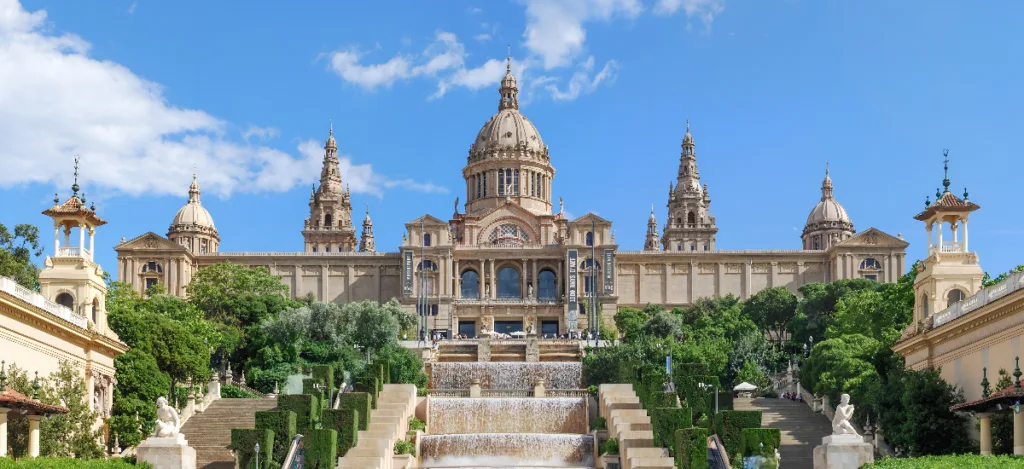
The best 20 Things to see and do in Barcelona
Barcelona is a city that truly has it all—from beautiful beaches to stunning architecture, delicious cuisine, and a vibrant cultural scene. Whether a first-time visitor or a seasoned traveler, there’s always something new to discover in this cosmopolitan metropolis.
We’ll be taking a look at the 20 best things to visit in Barcelona, from iconic landmarks like La Sagrada Família and Park Güell to hidden gems like El Born Cultural Center and the Gaudí Crypt. Join me to explore the top sights and experiences that this captivating city has to offer:
1. La Sagrada Família
La Sagrada Família is not only a testament to Gaudí’s distinctive architectural style but also a symbol of Barcelona’s cultural identity. Work on this monumental basilica commenced in 1882 and has been an ongoing project with an anticipated completion date around 2026, marking the centenary of Gaudí’s death.
The church is a UNESCO World Heritage Site and is renowned for its towering spires, each dedicated to a different biblical figure, and its three grand façades, each representing important Christian themes: Nativity, Passion, and Glory. Visitors can explore the richly decorated interiors and climb the towers to enjoy breathtaking views over Barcelona.
2. Park Güell
Park Güell is another of Gaudí’s masterpieces, originally conceived as a residential estate but now a public park that welcomes visitors from all over the world. It’s a surreal landscape of organic shapes, colonnades, and the famous dragon fountain at the entrance. The park is situated on Carmel Hill, which offers some of the best vistas of the city and the sea beyond. The colorful ceramic mosaics that decorate the park’s surfaces are emblematic of Gaudí’s unique approach to Modernisme.
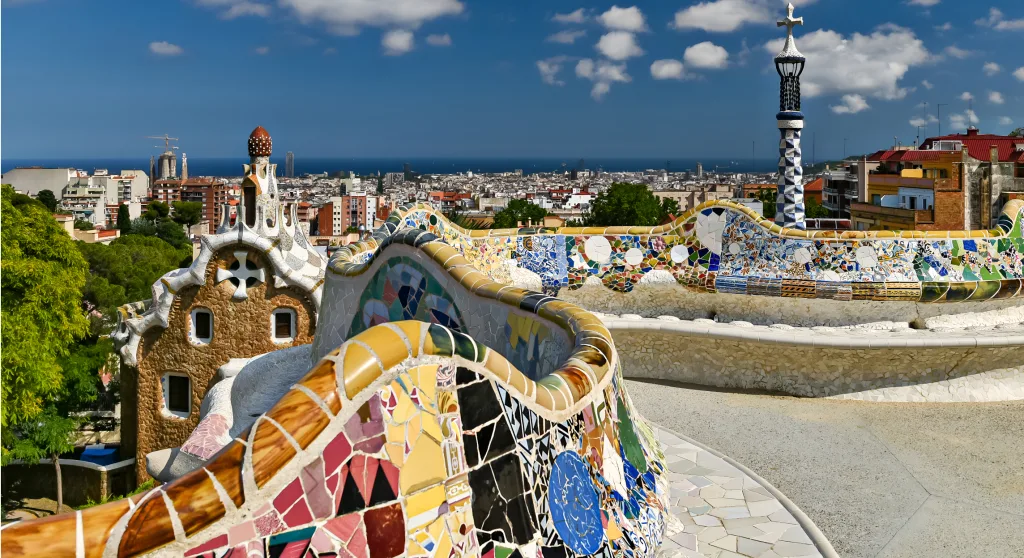
3. La Rambla de Barcelona
La Rambla is the heart of Barcelona’s social life, a tree-lined boulevard that stretches for 1.2 kilometers from Plaça de Catalunya to the Columbus Monument at Port Vell. This vibrant artery is alive with kiosks, flower stands, and lively human statues. It’s divided into five sections, each with its own character and range of attractions, including the Gran Teatre del Liceu and the Mercat de la Boqueria – a haven for food lovers.
4. Gothic Quarter
The Gothic Quarter is the center of the old city of Barcelona. It stretches from La Rambla to Via Laietana, and from the Mediterranean seafront to Ronda de Sant Pere. It is a magnet for history buffs and romantics, characterized by medieval buildings, narrow winding streets, and hidden squares that are often missed by tourists. The area is also home to the stunning Barcelona Cathedral, known for its Gothic façade and a peaceful cloister.
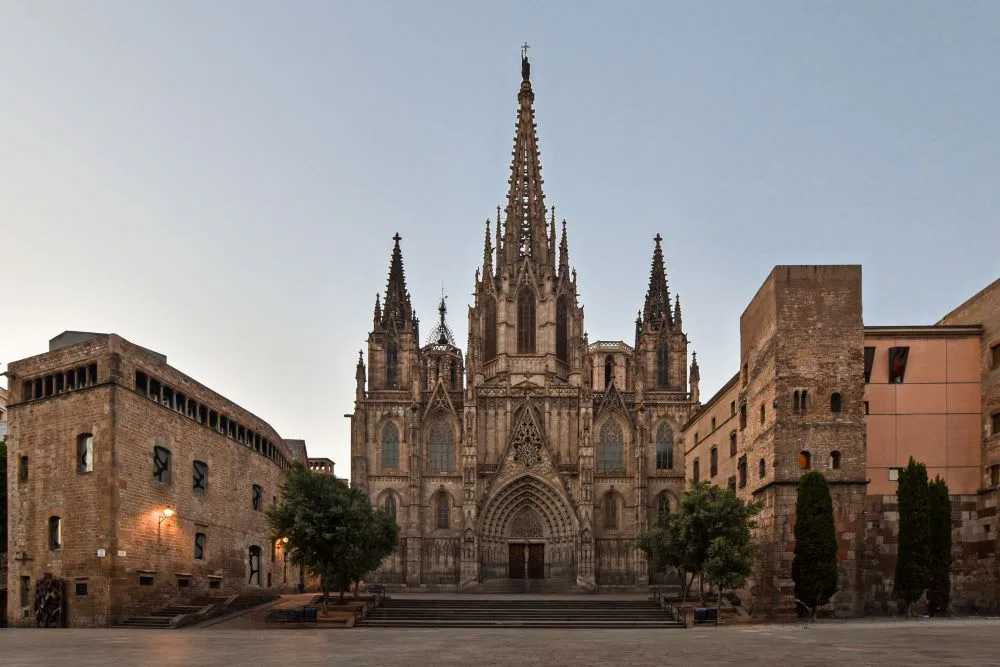
5. Casa Batlló
Casa Batlló is one of Gaudí’s two great buildings on Passeig de Gràcia, the other being La Pedrera. This building is an exceptional piece of architecture with its bone-like pillars, flowing stonework, and fascinating use of light and color. The façade sparkles with a mosaic made of broken ceramic tiles that reflect sunlight in an array of colors. The interior is just as impressive, with a central light well that shifts in color from blue to lighter tones as it ascends.
6. Montserrat
Montserrat is a multi-peaked mountain range rich in religious significance and natural beauty. The Benedictine abbey, Santa Maria de Montserrat, which hosts the Virgin of Montserrat sanctuary, is said to be the location of the Holy Grail in Arthurian myth. The natural park and its surroundings offer numerous hiking trails and climbing spots, while the monastery provides spiritual solace and cultural experiences like the renowned boys’ choir performances.
7. The Picasso Museum in Barcelona
The Picasso Museum in Barcelona houses one of the most extensive collections of artworks by the 20th-century Spanish artist Pablo Picasso. With over 4,000 works by Picasso, the museum has a profound collection that encompasses his entire career, with a focus on his formative years. The museum itself is located in five adjoining medieval palaces in Barcelona’s La Ribera neighborhood.
8. La Boqueria
La Boqueria Market is a feast for the senses with its bustling atmosphere and an array of fresh produce ranging from fruits and vegetables to seafood and Iberian ham. This market is not only where locals go to buy their groceries but also a popular spot for tourists to sample traditional Catalan cuisine at one of its many bars and restaurants.
9. La Barceloneta Beach
La Barceloneta Beach is one of Barcelona’s oldest and most beloved beaches, famous for its golden sands and clear waters. It’s a great place to relax or enjoy water sports like windsurfing and kite surfing. Along the promenade, there are numerous seafood restaurants and chiringuitos (beach bars) where visitors can enjoy fresh fish while overlooking the Mediterranean Sea.
10. Casa Milà (La Pedrera)
Casa Milà, commonly known as La Pedrera due to its stone-like exterior, is a remarkable building and one of Gaudí’s most famous works in Barcelona. Constructed between 1906 and 1912, this Modernist building was the last private residence designed by the celebrated architect. It stands out with its wavy brickwork and the twisting iron balconies and windows designed by Josep Maria Jujol.
The roof terrace, with its surrealistic chimneys and stunning views of the city, is particularly noteworthy. The structure was declared a World Heritage Site by UNESCO in 1984, recognizing its exceptional universal value. After years of restoration, it was opened to the public in 1996, offering visitors the chance to explore this artistic and architectural treasure.
11. Passeig de Gracia
Passeig de Gracia is one of Barcelona’s most important avenues, both in terms of business and tourism. Known for its luxury shopping, exquisite dining options, and some of the city’s most celebrated pieces of architecture, it’s a grand boulevard that showcases the prosperity of Barcelona during the late 19th and early 20th centuries.
Lined with Modernista buildings such as Casa Batlló, Casa Amatller, and Casa Lleó Morera, in addition to Casa Milà, Passeig de Gracia is a testament to the city’s architectural heritage. This avenue is not just a hub for fashion and commerce but also serves as an open-air museum, displaying the works of renowned architects like Antoni Gaudí and Lluís Domènech i Montaner.
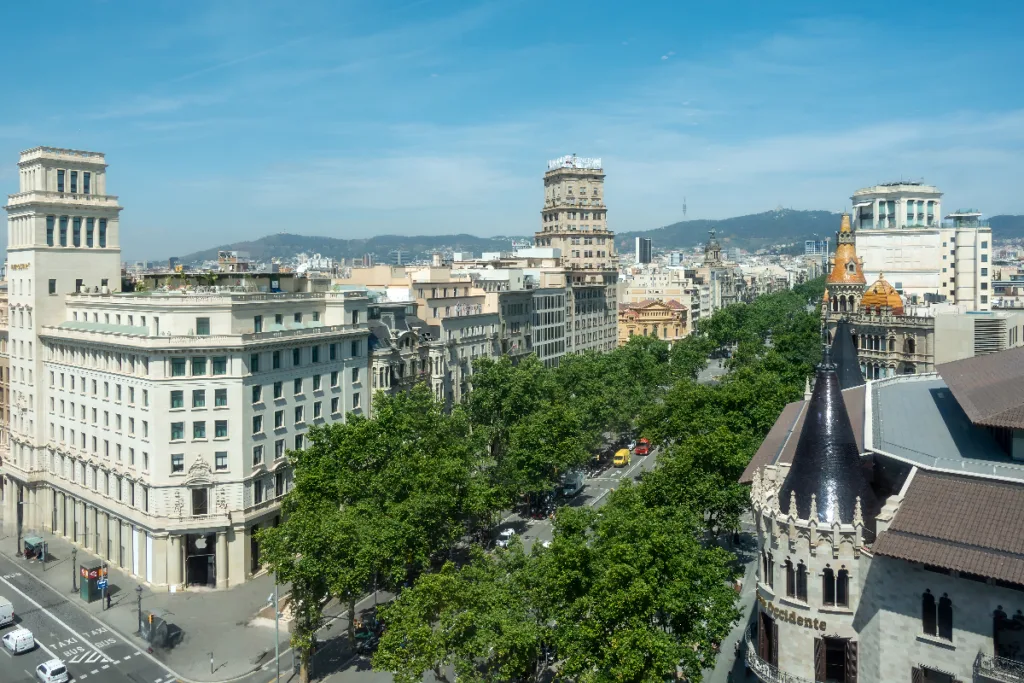
12. Palau de la Música Catalana
The Palau de la Música Catalana, designed by architect Lluís Domènech i Montaner, is an architectural jewel of Catalan Modernism. The concert hall, built between 1905 and 1908, is an exquisite representation of Catalan cultural heritage and is renowned for its stained-glass skylight and the intricate mosaic work on the façade. Its interior is a lavish celebration of light and space, with a central glass dome designed to flood the auditorium with natural light. The acoustics within the hall are considered to be among the best in the world, making it a favored venue for classical music performances. It has been listed as a UNESCO World Heritage Site since 1997, in recognition of its singular architectural and artistic significance.
13. Magic Fountain of Montjuïc
The Magic Fountain of Montjuïc, created by Carles Buigas for the 1929 International Exposition, is a breathtaking display of color, light, motion, water acrobatics, and music. Set against the backdrop of Montjuïc Hill near the Plaça d’Espanya and the National Palace, the fountain is one of Barcelona’s most popular attractions. The performances are synchronized to music ranging from classical to contemporary pop, creating an enthralling experience for spectators. The fountain underwent a major restoration prior to the 1992 Olympics and continues to captivate audiences with its dynamic shows.
14. El Born Cultural Center
El Born Cultural Center occupies the refurbished structure of the former Mercat del Born and sits atop ruins dating back to the 1700s, which were preserved after being discovered during construction works. This site offers a unique window into life in Barcelona before it fell during the War of Spanish Succession. It showcases the city’s history and archaeology through various exhibitions and cultural activities. The center not only serves as a repository of historical memory but also as a vibrant venue for workshops, debates, and performances reflecting Barcelona’s ongoing cultural narrative.
15. The Barcelona Cathedral
The Barcelona Cathedral, formerly known as the Cathedral of the Holy Cross and Saint Eulalia, is an exemplar of Catalan Gothic architecture. Construction began in the late 13th century but wasn’t completed until the mid-15th century. The cathedral’s rooftop offers panoramic views of the city, while its cloister is a serene space that hosts 13 white geese in honor of Saint Eulalia’s age at the time of her martyrdom. The impressive Gothic façade is complemented by an equally magnificent interior, featuring lofty vaults, a richly adorned choir, and a series of side chapels dedicated to various saints.
16. Museu Nacional d’Art de Catalunya
Perched majestically on Montjuïc Hill, the Museu Nacional d’Art de Catalunya (MNAC) is housed in the Palau Nacional. The museum boasts an impressive collection that covers a millennium of art from the 10th to the 20th centuries, with a particular focus on Catalan art. Its Romanesque church paintings are considered one of the most complete collections in the world. The museum also features Gothic, Renaissance, Baroque, Modernism, and avant-garde pieces, providing an extensive overview of Catalan art history.
17. Gracia Neighborhood
Gracia, once an independent town, has retained its distinct character even after being absorbed into Barcelona. This neighborhood is celebrated for its vibrant artistic community, diverse population, and a plethora of plazas that foster a strong sense of community. Gracia’s narrow streets are lined with unique boutiques, artisanal workshops, and international cuisine restaurants. The area comes alive during the annual Festa Major de Gracia, where streets are decorated with elaborate themes and locals engage in a week-long celebration.

18. Parc de la Ciutadella
Parc de la Ciutadella is Barcelona’s green oasis in the city center, offering a tranquil escape with its lush gardens, shaded pathways, and scenic lake where visitors can rent rowboats. Designed in the mid-19th century, it houses several attractions, including the Catalan Parliament building, the Barcelona Zoo, and the striking Cascada Fountain designed by Josep Fontserè with possible contributions from a young Gaudí. The park is not only a place for relaxation but also serves as a cultural hub with museums and regular events.
19. Hospital de Sant Pau
The Hospital de Sant Pau is more than a medical facility; it’s a standout masterpiece of the Modernism movement, designed by the Catalan architect Lluís Domènech i Montaner. Inaugurated in 1930, the hospital complex is one of the most significant works of the architect, who also designed the Palau de la Música Catalana. The series of pavilions are adorned with colorful tiles, sculptures, and stained-glass, forming a harmonious ensemble that integrates medical functionality with artistic beauty.
20. The Gaudí Crypt
Located in the Colonia Güell, the Gaudí Crypt is a testament to Antoni Gaudí’s innovative architectural vision. This crypt, which is part of an industrial complex initiated by Eusebi Güell in the town of Santa Coloma de Cervelló near Barcelona, represents a period where Gaudí experimented with many of the techniques he would later apply to the Sagrada Família. Although the church was never completed, the crypt stands as a magnificent example of Gaudí’s work, featuring his signature use of naturalistic forms and structures such as hyperbolic paraboloids. It is here that Gaudí first used tilted columns and parabolic arches that would become hallmarks of his later work.
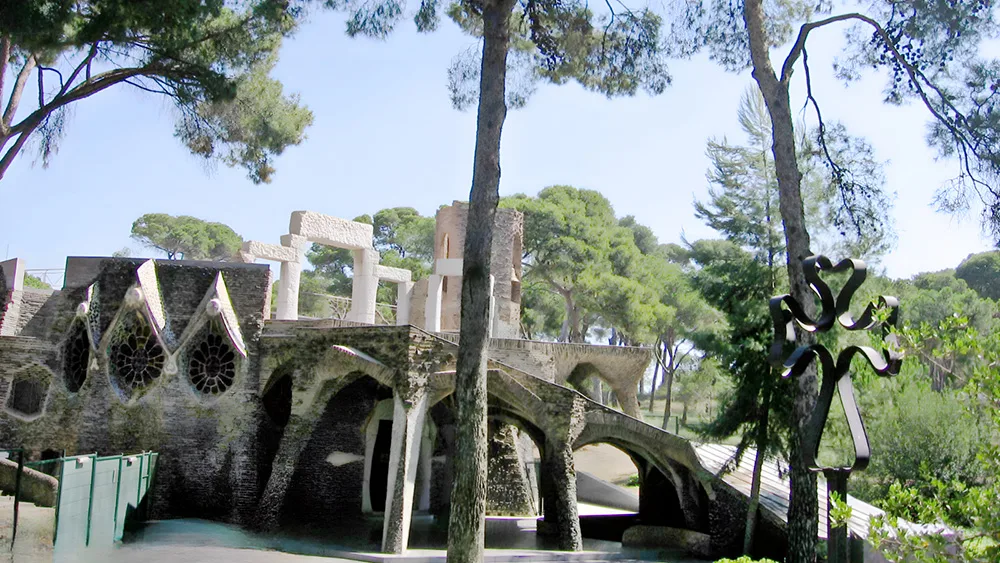
Barcelona is a city that will leave you spellbound with its beauty, history, and culture. From the stunning architecture of Antoni Gaudí to the vibrant energy of La Rambla and the picturesque coastline, there’s something for everyone in this city.
Whether you’re an art lover, a foodie, or simply looking for an unforgettable adventure, Barcelona has it all. So come and discover the magic of Barcelona for yourself! I hope this list of the 20 best things to visit in Barcelona has inspired you to book your next trip to this incredible destination.
Plan your visit to Barcelona
Barcelona is a city that never fails to impress. From its stunning architecture to its vibrant cultural scene, this cosmopolitan metropolis has something for everyone.
Whether you’re planning a romantic getaway, a family vacation, or a solo adventure, Barcelona is a must-see destination. To make your planning easier, you can find inspiration in these itineraries I’ve created to make the most out of your time in Barcelona:
What to See in Barcelona in 1 Day: Making the Most of 24 Hours in the City
Maximize Your Stay: Top Things to See in Barcelona in 2 Days
The ultimate list of places to visit in Barcelona in 3 days: Unmissable Sights and Hidden Gems
Discovering Barcelona in 4 Days: A Comprehensive Guide for a Journey through History and Beauty
Furthermore, here are some tips on planning your visit to Barcelona, including when to go, where to stay, what to eat, and how to get around.
— When to Go to Barcelona
Barcelona is a year-round destination, but the best time to visit is from May to June or September to October. During these months, the weather is mild, and the crowds are smaller than in the peak summer months of July and August.
The city also hosts several festivals and events throughout the year, including the Primavera Sound music festival in May, the Festa Major de Gracia in August, and the Mercè festival in September.

— Accommodation in Barcelona
Barcelona has a wide range of accommodation options to suit all budgets and preferences. From luxury hotels to budget-friendly hostels, you’ll indeed find something that suits your needs.
If you’re looking to remain in the heart of the action, the neighborhoods of El Raval and the Gothic Quarter offer plenty of options. For a more upscale experience, head to the trendy Eixample area, known for its stylish hotels and chic restaurants.
— Food
Barcelona is a food lover’s paradise, with abundant fresh produce, seafood, and local specialties. Some must-try dishes include paella, seafood fideuà, and patatas bravas.
For a quick and tasty bite, head to one of the city’s many tapas bars, which offer tiny plates of savory snacks and local specialties.
If you’re in the mood for something sweet, take advantage of the city’s famous churros and hot chocolate, which can be found at cafés and bakeries throughout the city.
Transportation around Barcelona
Barcelona has an efficient public transportation system that includes buses, metro, and trams. The metro is one of the most convenient ways to get around the city, with a network of 12 lines covering most areas.
If you prefer to travel above ground, the bus system is also a suitable option, with regular services to most parts of the city. Taxis are widely available but can be expensive, especially during peak tourist season.
Barcelona is a city that is sure to enchant and inspire you. With its stunning architecture, rich cultural heritage, and delicious food, it’s no wonder this city is a favorite among travelers worldwide.
So pack your bags and prepare for the adventure of a lifetime in Barcelona!
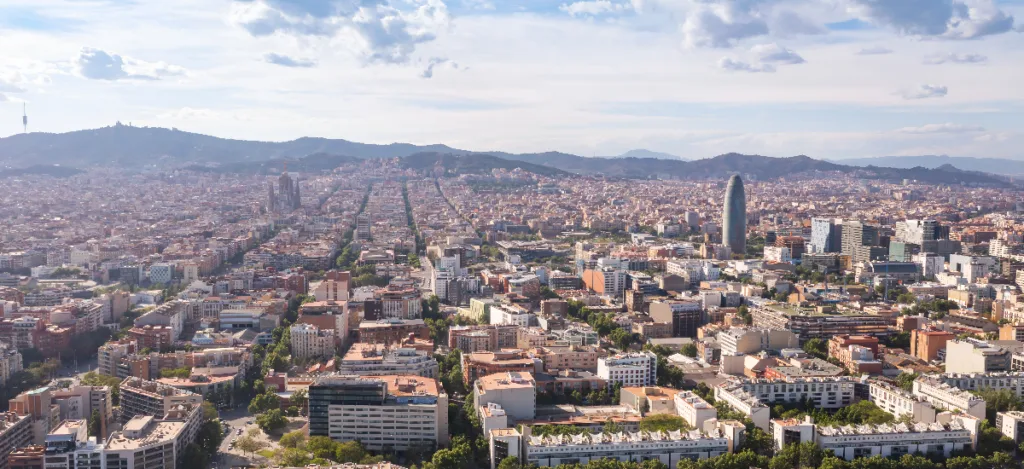
Ten Travel tips for an enjoyable journey to Barcelona
With its stunning architecture, rich history, delicious food, and lively atmosphere, Barcelona is a popular destination for travelers worldwide.
Aiming to help you make the most of your journey, I’ve compiled a list of ten travel tips to help you plan and enjoy your trip to this beautiful city.
From getting around to avoiding crowds and savoring local cuisine, these tips will help you have an unforgettable experience in Barcelona.
1. Plan ahead
Barcelona is a popular destination year-round, so it’s best to plan ahead and make reservations for accommodations, activities, and transportation in advance.
2. Choose the right time of year to visit Barcelona
The best time you can visit Barcelona is during the spring and fall when the weather is mild, and crowds are smaller. Summer might be hot and crowded, while winter can be rainy and cold.
3. Stay in the proper area
Choose your accommodation based on your interests and what you want to see and do in Barcelona. Staying in the city center will give you easy access to many main attractions, while staying in quieter neighborhoods like Gracia or El Raval can provide a more authentic local experience.
4. Use public transportation
Barcelona has an excellent public transportation system, including buses, metro, and trams. Purchase a T10 ticket for 10 rides or a Hola BCN! travel card for unlimited use on public transportation.
5. Walk and bike
Barcelona is a very walkable city that has many bike rental options. Walking and biking are great ways to explore the city and get some exercise while sightseeing.
6. Be aware of pickpockets
Barcelona has a reputation for pickpockets, especially in crowded tourist areas like La Rambla. Keep your valuables safe and be aware of your surroundings.
7. Take a siesta
Many shops and restaurants close during the mid-afternoon for a siesta, so plan your activities accordingly. Use this time to take a break, relax, and enjoy some downtime.
8. Try the local Barcelona cuisine
Barcelona is known for its delicious food, from tapas and paella to seafood and Catalan specialties. Explore the local markets like La Boqueria and try some local delicacies.
9. Learn some basic Spanish and Catalan
While many people in Barcelona speak English, learning some basic Spanish and Catalan phrases can go a long way to connect with locals and show respect for the local culture.
10. Enjoy the city’s cultural offerings
Barcelona is home to many museums, galleries, and cultural events. Take advantage of the city’s rich cultural offerings, from the works of Gaudí and Picasso to traditional Catalan festivals and concerts.

Barcelona is a city that truly has it all: stunning architecture, rich history, world-class cuisine, and a lively atmosphere that draws visitors from around the globe. Whether you’re exploring the winding streets of the Gothic Quarter, marveling at the works of Gaudi, or soaking up the sun of la Barceloneta, this city will leave a lasting impression on you. From the vibrant street life to the laid-back Mediterranean vibe, Barcelona has something for everyone.
So pack your bags, plan your trip, and get ready to experience the magic of this unforgettable city. Barcelona is waiting for you!
Discover Enchanting Destinations: Top Places to Visit Near Barcelona
Nestled along the shimmering Mediterranean coast, Barcelona captivates the hearts of travelers with its vibrant culture, stunning architecture, and dynamic street life. While the allure of this Catalan capital is undeniable, the surrounding regions offer a treasure trove of experiences that beckon the curious and adventurous. Whether you’re looking to explore beyond the city’s bustling streets or simply wish to uncover hidden gems in close proximity, a journey to the places near Barcelona promises to enrich your travel itinerary.
